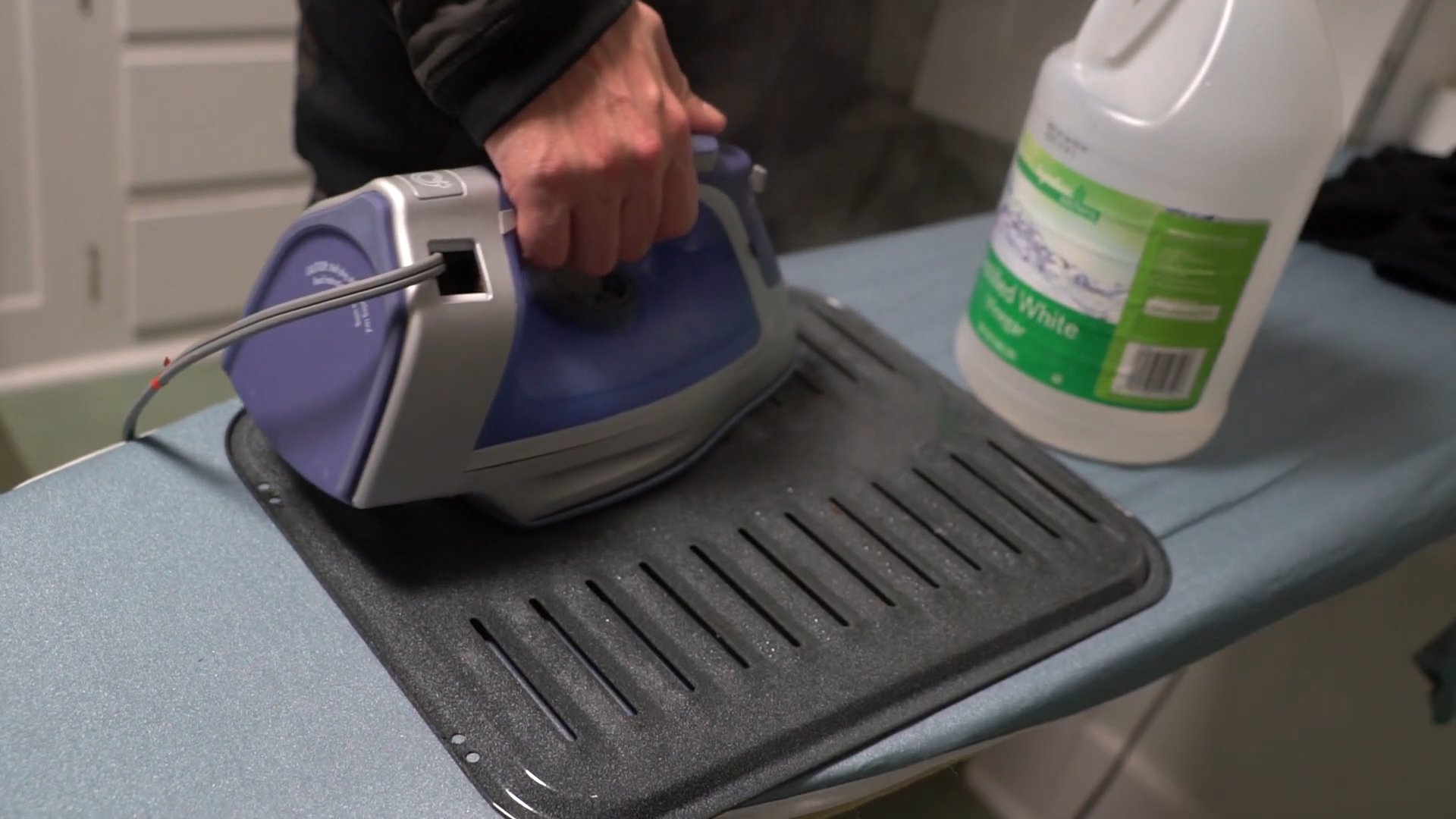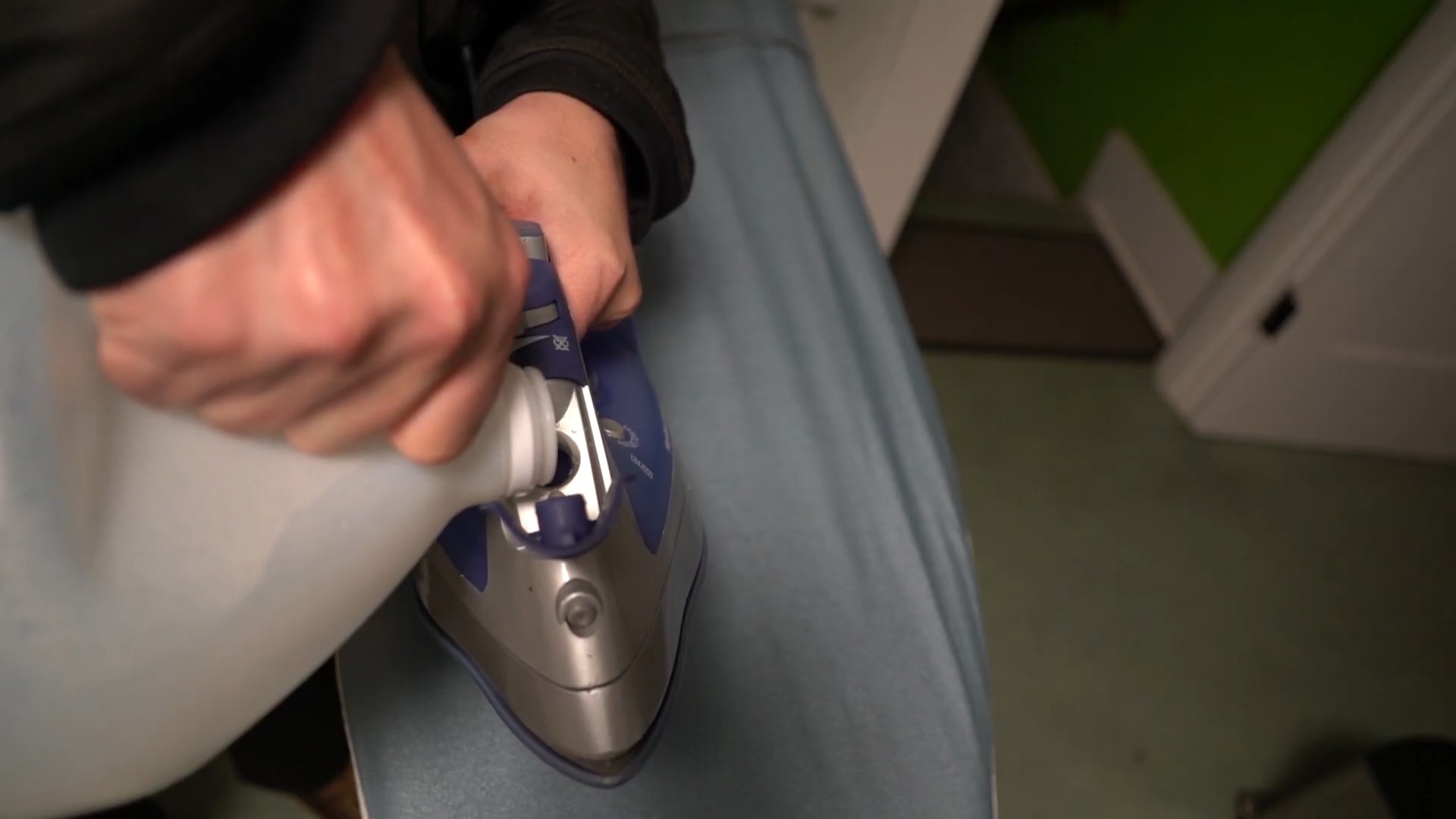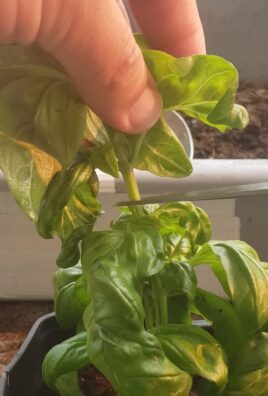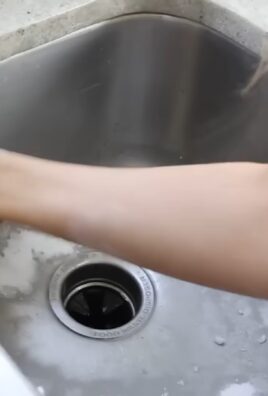Vinegar hacks for cleaning – who knew this humble kitchen staple could be your secret weapon for a sparkling home? I’m always on the lookout for ways to simplify my cleaning routine, and let me tell you, vinegar has been a game-changer! For centuries, vinegar has been used for its preservative and cleaning properties, dating back to ancient civilizations. The Romans even used it to clean their homes and tools!
But why should you care about vinegar hacks for cleaning? Well, in today’s world, we’re all looking for effective, eco-friendly, and budget-friendly solutions. Harsh chemicals can be tough on our skin, our wallets, and the environment. That’s where vinegar shines! It’s a natural, readily available, and incredibly versatile cleaner.
This article is packed with easy-to-follow DIY tricks that will show you how to harness the power of vinegar to tackle everything from stubborn stains to grimy surfaces. Get ready to ditch those expensive cleaning products and embrace the magic of vinegar hacks for cleaning – your home (and your wallet) will thank you!

Unlocking the Cleaning Power of Vinegar: Your Ultimate DIY Guide
Hey there, fellow cleaning enthusiasts! I’m about to let you in on a little secret – vinegar is a total game-changer when it comes to keeping your home sparkling clean. Forget those expensive, chemical-laden cleaners; vinegar is natural, affordable, and surprisingly effective. I’ve been using these hacks for years, and I’m excited to share them with you. Get ready to be amazed by the cleaning power of this humble kitchen staple!
Vinegar: Your All-Purpose Cleaning Solution
Before we dive into the specific hacks, let’s talk about why vinegar works so well. The magic lies in its acidity. Acetic acid, the main component of vinegar, is a natural disinfectant and degreaser. It can cut through grime, dissolve mineral deposits, and even kill some bacteria and mold. Plus, it’s safe for most surfaces (but always test in an inconspicuous area first!).
Safety First! While vinegar is generally safe, it’s important to remember a few things:
* Never mix vinegar with bleach. This creates toxic chlorine gas, which is extremely dangerous.
* Always dilute vinegar with water, especially when cleaning delicate surfaces.
* Test on a small, hidden area before applying to the entire surface.
* Wear gloves if you have sensitive skin.
Cleaning Your Kitchen with Vinegar
The kitchen is often the dirtiest room in the house, but vinegar can make tackling those messes a breeze.
Cleaning Your Microwave
Microwaves can get pretty gross with splattered food and lingering odors. Here’s how to clean yours with vinegar:
1. Prepare the solution: In a microwave-safe bowl, mix 1 cup of water with 1/4 cup of white vinegar.
2. Microwave the mixture: Place the bowl in the microwave and heat on high for 5-7 minutes. The steam will loosen the grime.
3. Let it sit: Leave the door closed for another 5 minutes to allow the steam to work its magic.
4. Wipe it clean: Carefully remove the bowl (it will be hot!) and wipe down the inside of the microwave with a clean cloth or sponge. The grime should come off easily. For stubborn spots, dip your cloth in the vinegar solution and scrub gently.
5. Wipe down the exterior: Mix equal parts vinegar and water in a spray bottle. Spray the exterior of the microwave and wipe clean with a cloth.
Degreasing Your Stovetop
Grease splatters are inevitable when cooking, but vinegar can help you keep your stovetop sparkling.
1. Remove loose debris: Use a dry cloth or paper towel to wipe away any loose food particles or grease.
2. Prepare the vinegar solution: Mix equal parts white vinegar and water in a spray bottle.
3. Spray and let it sit: Spray the vinegar solution liberally onto the stovetop, focusing on areas with heavy grease buildup. Let it sit for 5-10 minutes to allow the vinegar to break down the grease.
4. Scrub and wipe: Use a non-abrasive sponge or cloth to scrub the stovetop. For stubborn grease, you can sprinkle some baking soda on the surface before scrubbing.
5. Rinse and dry: Rinse the stovetop with clean water and dry with a clean cloth.
Cleaning Your Dishwasher
Did you know you can use vinegar to clean your dishwasher? It helps remove mineral buildup and keeps it smelling fresh.
1. Empty the dishwasher: Make sure your dishwasher is completely empty.
2. Place vinegar in a dishwasher-safe cup: Fill a dishwasher-safe cup or bowl with 1 cup of white vinegar.
3. Place the cup on the top rack: Position the cup upright on the top rack of the dishwasher.
4. Run a hot cycle: Run the dishwasher on a hot cycle without detergent.
5. Repeat monthly: For best results, repeat this process once a month.
Freshening Your Garbage Disposal
Garbage disposals can get pretty stinky. Here’s how to freshen yours up with vinegar:
1. Make vinegar ice cubes: Fill an ice cube tray with white vinegar and freeze.
2. Drop the cubes into the disposal: Drop a few vinegar ice cubes into the garbage disposal.
3. Run the disposal: Turn on the cold water and run the disposal until the ice cubes are completely ground up. The vinegar will help clean the blades and freshen the disposal.
Cleaning Your Bathroom with Vinegar
The bathroom is another area where vinegar can really shine. It’s great for removing soap scum, hard water stains, and mildew.
Cleaning Showerheads
Showerheads can get clogged with mineral deposits, reducing water pressure. Here’s how to clean them with vinegar:
1. Fill a plastic bag with vinegar: Pour enough white vinegar into a plastic bag to completely submerge the showerhead.
2. Secure the bag: Secure the bag around the showerhead with a rubber band or twist tie.
3. Soak overnight: Let the showerhead soak in the vinegar overnight.
4. Remove and rinse: Remove the bag and rinse the showerhead thoroughly with water. Use an old toothbrush to scrub away any remaining mineral deposits.
Removing Soap Scum from Shower Doors
Soap scum can be a real pain to remove, but vinegar can help.
1. Heat the vinegar: Heat 1 cup of white vinegar in the microwave until it’s warm (but not boiling).
2. Mix with dish soap: Pour the warm vinegar into a spray bottle and add 1 tablespoon of dish soap.
3. Spray and let it sit: Spray the mixture onto the shower doors and let it sit for 10-15 minutes.
4. Scrub and rinse: Use a non-abrasive sponge or cloth to scrub the shower doors. Rinse thoroughly with water.
Cleaning Toilets
Vinegar can help clean and deodorize your toilet.
1. Pour vinegar into the bowl: Pour 1 cup of white vinegar into the toilet bowl.
2. Let it sit: Let the vinegar sit for at least 30 minutes, or even overnight for tough stains.
3. Scrub and flush: Use a toilet brush to scrub the bowl, paying attention to any stains or mineral deposits. Flush the toilet.
Other Clever Vinegar Cleaning Hacks
Vinegar isn’t just for the kitchen and bathroom. Here are a few other ways you can use it around your home:
Cleaning Windows and Mirrors
Vinegar is a great natural alternative to commercial window cleaners.
1. Mix the solution: Mix equal parts white vinegar and water in a spray bottle.
2. Spray and wipe: Spray the solution onto the windows or mirrors and wipe clean with a microfiber cloth. For streak-free results, use a clean, dry cloth to buff the surface.
Removing Carpet Stains
Vinegar can help remove some types of carpet stains.
1. Test in an inconspicuous area: Before applying to the entire stain, test the vinegar solution in a hidden area of the carpet to make sure it doesn’t damage the fibers.
2. Mix the solution: Mix equal parts white vinegar and water in a spray bottle.
3. Spray and blot: Spray the solution onto the stain and blot with a clean cloth. Avoid rubbing, as this can spread the stain.
4. Repeat as needed: Repeat the process until the stain is removed.
5. Dry the area: Once the stain is gone, blot the area with a dry cloth to remove excess moisture. You can also use a fan to speed up the drying process.
Cleaning Your Coffee Maker
Mineral buildup can affect the performance of your coffee maker. Vinegar can help remove these deposits.
1. Fill the water reservoir: Fill the water reservoir of your coffee maker with equal parts white vinegar and water.
2. Run a brewing cycle: Run a full brewing cycle.
3. Rinse with water: Run two or three cycles with fresh water to rinse away any remaining vinegar.
Deodorizing Laundry
Vinegar can help remove odors from your laundry.
1. Add vinegar to the wash: Add 1/2 cup of white vinegar to the washing machine during the rinse cycle.
2. Dry as usual: Dry your clothes as usual. The vinegar will help remove odors and leave your clothes smelling fresh.
Cleaning Your Iron
Mineral deposits can clog the steam vents of your iron. Vinegar can help clean them out.
1. Empty the iron: Make sure your iron is empty of water.
2. Fill with vinegar: Fill the water reservoir with equal parts white vinegar and water.
3. Heat the iron: Heat the iron to the highest setting and let it steam for a few minutes.
4.

Conclusion
So, there you have it! This deep dive into vinegar hacks for cleaning proves that you don’t need a cabinet overflowing with expensive, harsh chemicals to achieve a sparkling clean home. The versatility of vinegar, its affordability, and its eco-friendly nature make it a truly indispensable tool in any cleaning arsenal. We’ve explored how to tackle everything from stubborn hard water stains to lingering odors, all with this one simple ingredient.
But why is this DIY approach a must-try? Beyond the cost savings and environmental benefits, using vinegar allows you to control exactly what goes into your cleaning solutions. You avoid the potentially harmful additives and fragrances found in many commercial products, creating a healthier environment for yourself, your family, and your pets. Plus, there’s a certain satisfaction in knowing you’re achieving impressive results with a natural, time-tested method.
Don’t be afraid to experiment with variations! Infuse your vinegar with citrus peels for a fresh, invigorating scent. Add a few drops of your favorite essential oil for an aromatherapy boost while you clean. For tougher stains, create a paste of vinegar and baking soda for extra scrubbing power. The possibilities are truly endless.
We’ve armed you with the knowledge and the inspiration to transform your cleaning routine. Now, it’s your turn to put these vinegar hacks for cleaning to the test. We’re confident that you’ll be amazed by the results. Embrace the power of vinegar and discover a cleaner, healthier, and more sustainable way to care for your home.
We encourage you to try these hacks and share your experiences with us! Let us know which tips worked best for you, any variations you discovered, and any challenges you encountered. Your feedback will not only help us improve our recommendations but also inspire other readers to embrace the magic of vinegar cleaning. Share your before-and-after photos, your favorite vinegar-based recipes, and your cleaning triumphs in the comments below. Let’s build a community of vinegar enthusiasts and revolutionize the way we clean!
Frequently Asked Questions (FAQs)
Is vinegar safe to use on all surfaces?
While vinegar is a fantastic cleaning agent, it’s crucial to understand its limitations. Avoid using vinegar on natural stone surfaces like marble, granite, and travertine. The acidity can etch and damage these materials. Similarly, avoid using vinegar on waxed wood furniture, as it can strip the wax finish. It’s also best to avoid using vinegar on electronics screens, as the liquid can seep into the device and cause damage. Always test vinegar in an inconspicuous area before applying it to a larger surface, especially if you’re unsure about its compatibility. When in doubt, consult the manufacturer’s recommendations for cleaning specific surfaces.
What type of vinegar is best for cleaning?
Plain white distilled vinegar is the most effective and versatile type of vinegar for cleaning. It has a higher acidity level than other types of vinegar, making it more potent for dissolving grime, killing bacteria, and removing odors. Avoid using flavored vinegars, such as apple cider vinegar or balsamic vinegar, as they may contain sugars or other additives that can leave a sticky residue. While apple cider vinegar can be used in some cleaning applications, white distilled vinegar is generally the preferred choice for its superior cleaning power and neutral scent.
How do I get rid of the vinegar smell after cleaning?
The strong smell of vinegar is a common concern for many people. Fortunately, the odor dissipates quickly. To minimize the smell, ensure proper ventilation by opening windows or turning on a fan while cleaning. You can also add a few drops of your favorite essential oil to your vinegar solution to mask the scent. Citrus oils, such as lemon, orange, or grapefruit, work particularly well. After cleaning, you can also simmer a pot of water with citrus peels or herbs like rosemary or lavender to freshen the air. The vinegar smell will typically disappear within a few hours, leaving your home clean and fresh.
Can I mix vinegar with other cleaning products?
Never mix vinegar with bleach. This combination creates toxic chlorine gas, which can be extremely harmful and even fatal. Mixing vinegar with other cleaning products, such as ammonia, can also produce dangerous fumes. It’s best to use vinegar on its own or with simple ingredients like baking soda, water, or essential oils. When in doubt, avoid mixing vinegar with any other cleaning product to prevent potentially hazardous chemical reactions.
How do I clean my coffee maker with vinegar?
Cleaning your coffee maker with vinegar is a simple and effective way to remove mineral buildup and improve its performance. Fill the water reservoir with a solution of equal parts white distilled vinegar and water. Run the coffee maker through a full brewing cycle. Then, run two or three cycles with fresh water to rinse away any remaining vinegar. This process will descale your coffee maker, removing mineral deposits that can affect the taste of your coffee. Repeat this process every one to three months, depending on the frequency of use and the hardness of your water.
Can vinegar kill mold?
Yes, vinegar is effective at killing many types of mold. White distilled vinegar contains acetic acid, which is a natural disinfectant and mold killer. To kill mold with vinegar, spray undiluted vinegar onto the affected area and let it sit for at least an hour. Then, scrub the area with a brush or sponge and rinse with water. For porous surfaces like drywall or wood, you may need to repeat the process several times to ensure that the mold is completely eradicated. While vinegar is effective for killing surface mold, it may not be as effective for deep-seated mold infestations. In such cases, it’s best to consult with a professional mold remediation specialist.
How can I use vinegar to clean my showerhead?
Over time, showerheads can become clogged with mineral deposits, reducing water pressure and affecting the spray pattern. To clean your showerhead with vinegar, fill a plastic bag with white distilled vinegar and secure it around the showerhead with a rubber band or twist tie. Make sure the showerhead is completely submerged in the vinegar. Let it soak for several hours or overnight. Then, remove the bag and run the shower to flush out any remaining vinegar and mineral deposits. This simple trick will restore your showerhead’s performance and improve your showering experience.
Is vinegar safe for septic systems?
Yes, vinegar is generally safe for septic systems. Unlike harsh chemicals, vinegar is a natural substance that won’t harm the beneficial bacteria in your septic tank. In fact, vinegar can even help to break down organic matter and prevent clogs. However, it’s important to use vinegar in moderation. Avoid pouring large quantities of vinegar down the drain at once, as this could temporarily disrupt the balance of your septic system. When used responsibly, vinegar is a safe and eco-friendly cleaning option for homes with septic systems.
How can I use vinegar to remove hard water stains?
Hard water stains, caused by mineral deposits, can be unsightly and difficult to remove. Vinegar is an excellent solution for tackling these stains. To remove hard water stains from faucets, showerheads, and other fixtures, soak a cloth or sponge in white distilled vinegar and apply it to the affected area. Let it sit for several minutes or even hours for stubborn stains. Then, scrub the area with a brush or sponge and rinse with water. For larger surfaces like shower doors or tiles, you can spray a vinegar solution onto the area and let it sit before scrubbing and rinsing. Vinegar’s acidity dissolves the mineral deposits, leaving your surfaces sparkling clean.




Leave a Comment